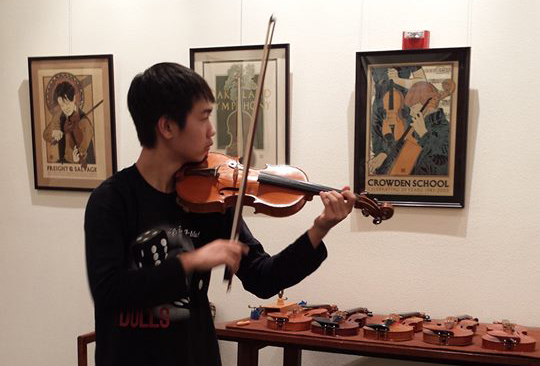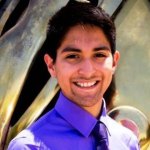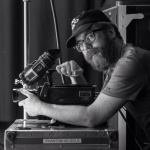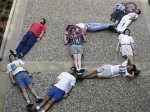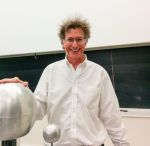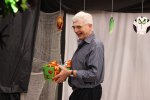I’ve been to my fair share of External Advisory & Development Council meetings during the past decade, but this one took the cake. Well, make that melted dark chocolate.
Each fall meeting marks the addition of a few new members — names and faces that I try my best to mentally file along with the customary group of longtime favorites I so enjoy seeing on a biannual basis. While newcomers are always recognized at some point in the meeting, I don’t recall any of them previously being allowed to make short presentations as part of the induction process.
Based on last month’s experiences, let’s just say the bar’s been raised on what I personally hope is a new tradition.
Each meeting typically is broken into morning and afternoon sessions, separated by one break per session as well as lunch. When we returned from said lunch, I immediately spotted an array of products stacked against the base of the speaker podium — the first indication we were in for a treat on top of the delicious cheesecake we’d just been served as dessert. Beyond the fact that they looked slightly similar to the MREs (meals ready to eat) I’d seen in a previous work life in which one of my supervisors was ex-military, I quickly dismissed them as the venue possibly peddling some new coffee samples or something equally innocuous.
Mistake No. 1.
As Lynntech’s Tony Ragucci, the first of two new members in attendance, took to the podium to briefly describe his company and related work, I couldn’t help but notice as a wait-staff member methodically went seat by seat, row by row to distribute individually prepackaged toothpicks. Mildly intriguing, but then again, we’d just finished lunch, so. … Back to the presentation at hand.

Lynntech’s Tony Ragucci presents his company’s research capabilities and focus areas, which span an impressive array of science and engineering disciplines and deliverables.
Too late! I’d glanced to my left, toward the end of our row of tables, where I zeroed in on four small plates with sliced bananas and strawberries?!? Granted, EADC Chair Dr. John Beckerdite ’76 was seated there, so perhaps he had merely requested an extra dessert or two, which wouldn’t be out of the question, right?
By this point, my spidey senses were beyond tingling. Thankfully, Dr. Ragucci was hitting a most interesting stride, so I immersed myself in learning all that I could about condensed matter physics and some pretty sophisticated materials science and engineering, along with related fabrication. Mind sated, curiosity abated. Although he couldn’t disclose the company’s clients by name nor discuss specific information about the proprietary projects and products, that merely added myth to the mystery for me. After all, exclusivity is one of the council’s biggest draws, and it comes bundled with a palpable sense of curiosity that permeates the entire room.
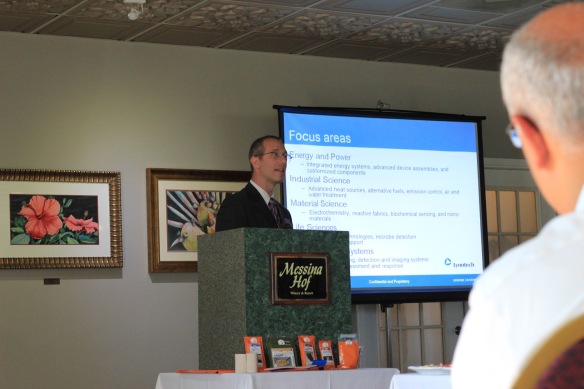
During the lunch break prior to Ragucci’s presentation, RBC Technologies’ Adam Laubach clearly had been busy, as evidenced by the products assembled in front of the speaker’s podium.
After Dr. Ragucci concluded his presentation, Dr. Beckerdite introduced our second new member, RBC Technologies’ Adam Laubach. He began to talk about batteries, a subject I could readily identify with not as a scientist but as a parent responsible for three kids ages 11 and under and, more importantly, keeping a steady supply of AA, AAA, 9-volt, C and D batteries on hand at any given moment as well making sure that all cell phones and electronic devices are charged.

RBC Technologies’ Adam Laubach explains his company’s Safe Heat product line featuring the Rapid Splint.
I’m pretty sure the entire room was as surprised as I was when Mr. Laubach and Dr. Beckerdite began distributing via the first person in each row a variety of rectangular-shaped items adorned with shiny, bright-orange packaging. After polling the group to see if anyone was in orthopedics, he then asked each row to peel back and remove an adhesive strip from the first item — a thin, roughly 3-inch X 12-inch board resembling the look and feel of spongy corrugated cardboard. And to wait for a couple minutes as the product heats up (wait, what?!?)

(From left:) EADC members Dr. Donald Fleming, Jr., Col. USMC (Ret) ’74 and Albert Gallatin ’61 inspect their row’s allotment of RBC products.
Long story short, he then proceeded to set Dr. Beckerdite’s pretend forearm fracture, using what in the course of a couple minutes had morphed from a lifeless cardboard wafer into a warm, entirely flexible and moldable splint which hardened as it cooled before our eyes into the equivalent of a rock-solid cast! In true salesman-esque, but-wait! fashion, there was more —- smaller, bright-orange, rectangular packets containing dark chocolate (which, once warmed, we drizzled over the fruit and then used our handy-dandy toothpicks to eat), hand lotion and wet wipes. There was even one for macaroni and cheese, but given that this product still is in the final testing phases, it was empty. The intriguing takeaway there for me is that it’s named after Mr. Laubach’s daughter —- further proof of that softer side of science I’ve always loved.
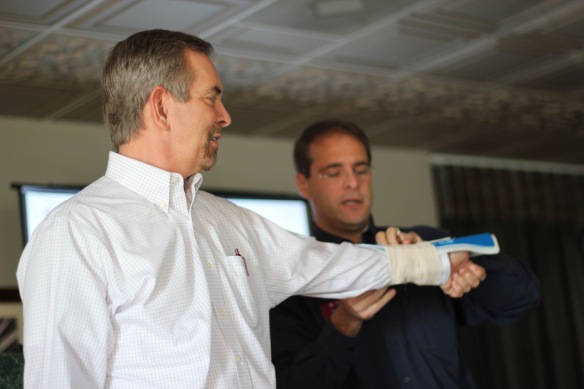
EADC Chair Dr. John Beckerdite ’76, getting his “injury” set by Adam Laubach.
All in all, show and tell -— much less science -— doesn’t get much better than warm comfort food and portable medical supplies. Nor does the fact that, at their core, scientists are humans. One of the best varieties, in my book: those who are highly motivated to improve the future. Sometimes, it’s a direct route. Other times, it involves detours -— years that all too quickly turn into decades of hard work that doesn’t always pan out, save for in the occasional, sobering realization that it’s time for a new direction.
In RBC’s case, they continued to dance with the one that brought them (batteries), secure enough in their extensive knowledge and experience to take two steps back before breaking into what looks to be one heck of a technological tango from here.
Ultimately, those rectangular packages harbor a lot more than some spectacular self-heating technology for a variety of commercial and societal uses. To me, they are a perfect metaphor for science and scientists who, on the surface, often appear pretty ordinary if not downright non-descript. However, given the right catalyst, the sky’s the limit as to where their innate inspirational fire, once activated, will take them and, by default, our world.
As for me, I think a field trip to Science Park at Research Valley (where both Lynntech and RBC are located) definitely is in order. Just in case, I’m bringing a fork.

Laubach serves up one of the day’s most popular Safe Heat products — melted dark chocolate drizzled over sliced strawberries and bananas.
Click to see additional photographs from the Fall EADC Meeting, held October 24 at Messina Hof Winery & Resort in Bryan, Texas.

